St Asaph Town Trail
St Asaph – population about 4,000 – has always thought of itself as a city but the rest of Britain didn’t catch on until the Queen awarded it civic honours during her Diamond Jubilee.
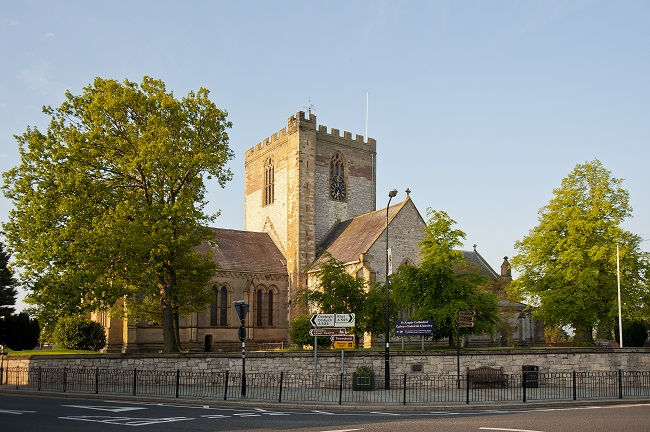
Distance: 1 mile /1.6 km including riverside walk
Difficulty: Fairly easy ascent up High Street, riverside path can be muddy
Walking time: 1 hour
Start point: Car park south of the cathedral LL17 ORD
Public transport: Traveline Cymru 0800 464 0000,
National Rail Enquiries 03457 484950
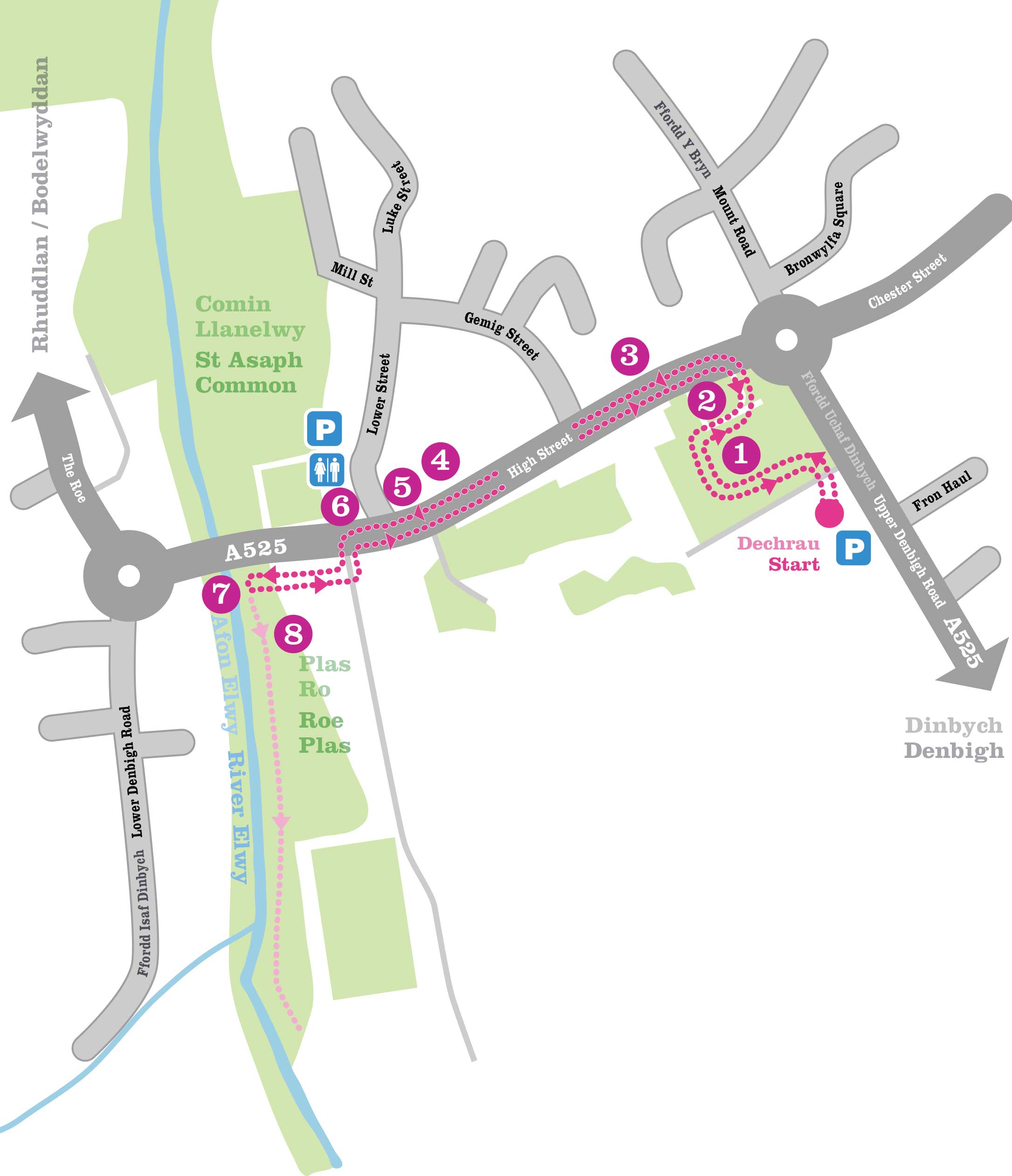
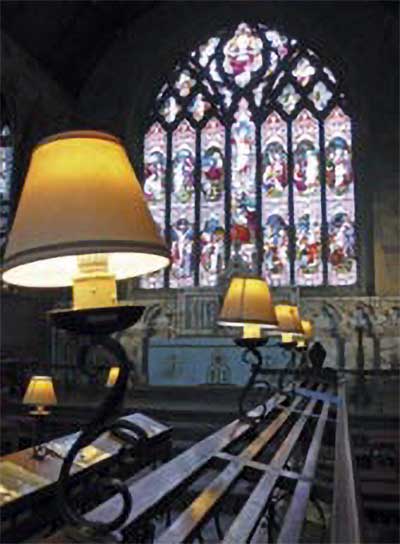
St Asaph
Cathedral
This is the smallest ancient cathedral in Britain – just 182 feet long and 68 feet wide. But this hasn’t stopped it getting into trouble. Founded by the Normans in the 12th century, the cathedral has suffered repeated assaults – badly damaged by Edward I in 1282, burned by Owain Glyndŵr in 1402 and used as a stable by Roundheads during the Civil War. But through continual rebuilding and restoration it maintains the “dignity and grandeur” described by Dr Johnson. Its greatest treasure is a 16th century William Morgan Bible. Interactive exhibitions tell the story of this remarkable building, while the Translators’ Tearoom dispenses delicious drinks, sandwiches, soup and cakes.
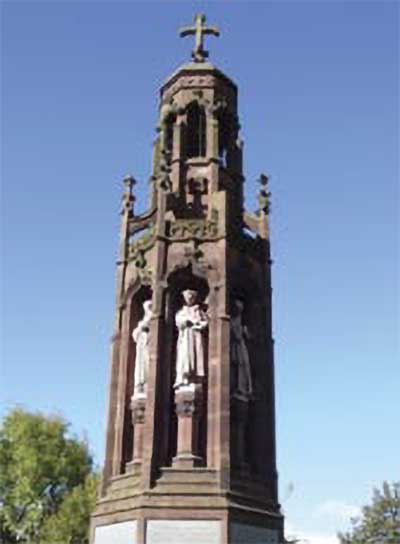
Translators’
Memorial
This splendid Gothic tower was erected by the Victorians to celebrate the 300th anniversary of the translation of the Bible into Welsh. From their canopied niches, the statues of eight scholars stare out across the cathedral green – including Bishop William Morgan, whose Bible of 1588 helped save one of Europe’s oldest languages from oblivion. So vivid and well-loved was this work that it remained in widespread use until the late 20th century. The cathedral has an original copy on display and Morgan himself, who died a poor man in 1604, is buried beneath the high altar.
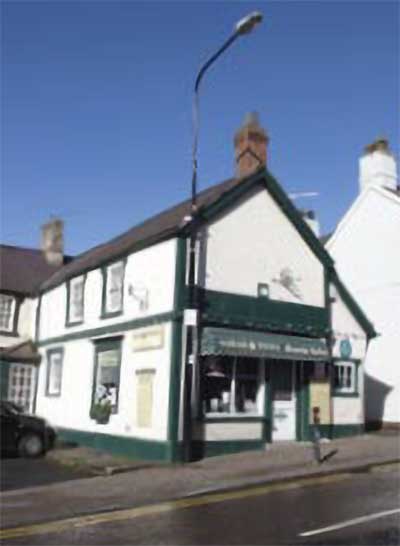
Powell Brothers
House
Take steps down to High Street and turn left.
The house, now a beauty salon, bears a date stone of 1745 but this is a story of music more than architecture. It was the birthplace of brothers George and Felix Powell, whose song “Pack up your troubles in your old kit-bag” became hugely popular during the Great War. Ironically, George was a pacifist and refused to fight but Felix toured the trenches of the Western Front with their morale-boosting song. Further down High Street on the left, just before the church, are the Barrow Almshouses built in 1680 by Bishop Barrow for “eight poor widows of good character”.
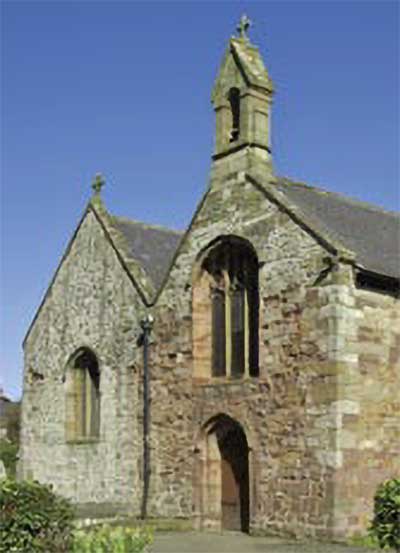
Parish Church
St Asaph grew up around a monastery on the banks of the Elwy founded by Saint Kentigern, otherwise known as Mungo, in 560AD – and left in the care of his favourite pupil Saint Asaph. Quite rightly, the church has been dedicated to both these heroes of the town since the middle of the 12th century. The present building was built on top of older foundations in 1524 and soon extended in the typical double-naved Denbighshire style. Both naves have wonderful hammer-beam roofs, decked with angels on the older south side. The indomitable architect Sir George Gilbert Scott added the porch, bellcote and vestry in 1872.
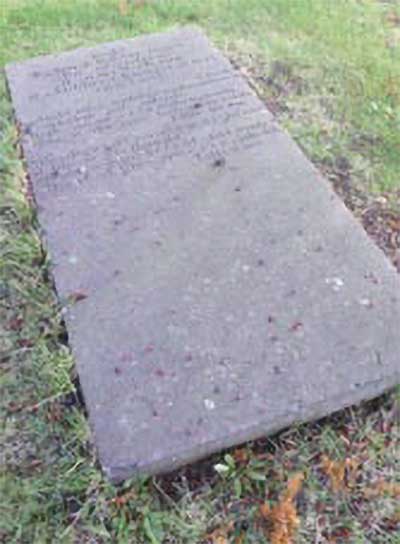
Dic Aberdaron
Grave
It was pure chance that nomadic “Dic Aberdaron”, real name Richard Jones, died in St Asaph in 1843. This uneducated son of a boat-builder spent his life wandering through Wales and England, barefoot and long-haired, carrying a harp, many books and a pet cat. He could speak 14 languages including the ancient tongues of the Middle East and had spent years writing a Welsh-Hebrew-Greek dictionary. Sadly it was never published – the National Library of Wales in Aberystwyth has the only copy – and he died a disappointed man. You’ll find his gravestone on its own near the end of the railings in the south-west corner of the churchyard.
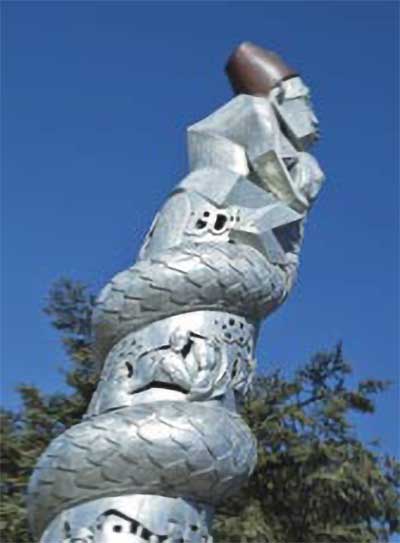
H M Stanley
Obelisk
Victorian explorer Henry Morton Stanley was born in Denbigh and raised in the St Asaph workhouse, later a hospital bearing his name. He eventually escaped from this “house of torture”, ran away to sea – and served on both sides in the American Civil War. While working as a journalist he tracked down Scottish missionary David Livingstone in deepest Central Africa with the words: “Dr Livingstone, I presume?” He later hatched schemes with King Leopold II of Belgium to harness the Congo’s natural resources. Scenes from his controversial life spiral around this striking obelisk, topped by a miniature copy of a Congolese effigy.
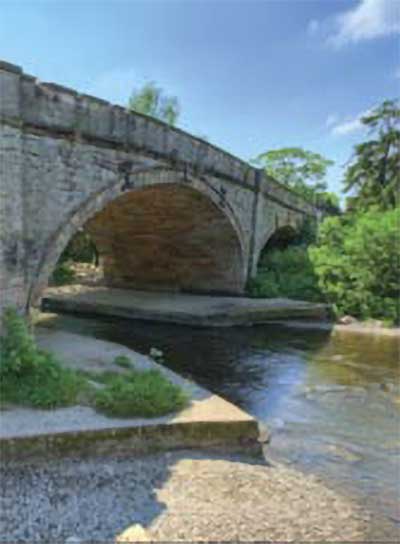
Elwy Bridge
Turn left opposite the bus shelter into the park, then immediately right to follow the footpath to the bridge.
This limestone and sandstone bridge over the temperamental River Elwy may be a Scheduled Ancient Monument but it isn’t the original one. That was further downstream, made of wood and prone to flood damage. So in about 1770 Joseph Turner, architect of Ruthin Gaol, came up with this elegant five-arched design spanning a total of 65 metres – wide enough to cope when the river burst its banks. Turn left for Roe Plas or walk under the bridge to see St Asaph Common.
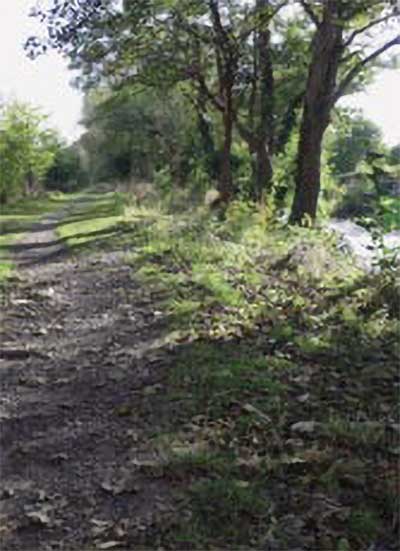
Roe Plas
The fast-flowing River Elwy holds plenty of trout, salmon and bullhead which in turn attract herons and kingfishers – even the occasional otter. So this optional riverside walk offers the chance of a memorable encounter. Even if they’re feeling shy, you’re sure to see snowdrops, wood anemones, primroses, cowslips or marsh marigolds, depending on the season. Not to mention the rarest timber tree in Britain: the Black Poplar. There are just 2,000 of these gracefully arching trees, once used to make cruck frames, left in Britain. Roe Plas has some of the finest specimens in the country.
Now simply retrace your steps to your car.
